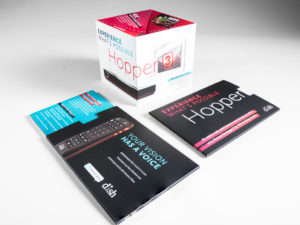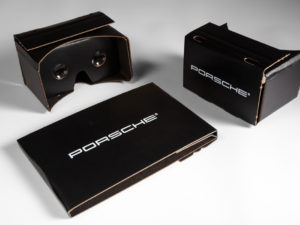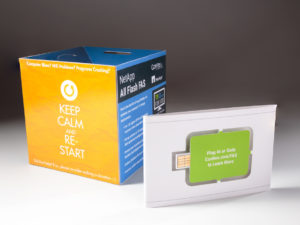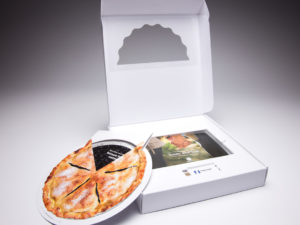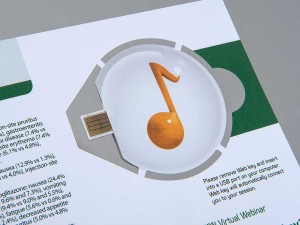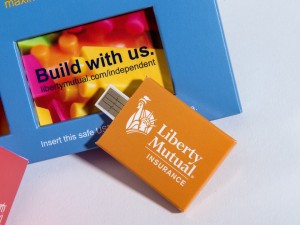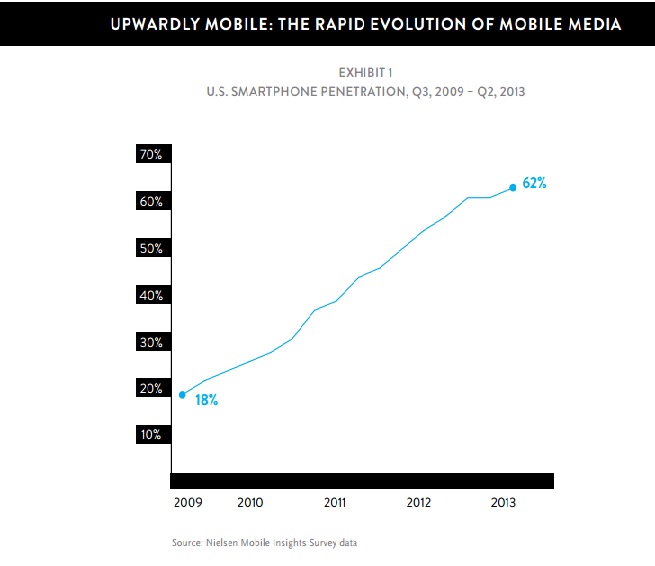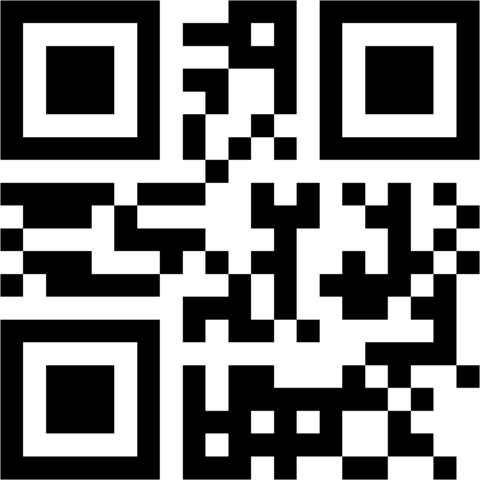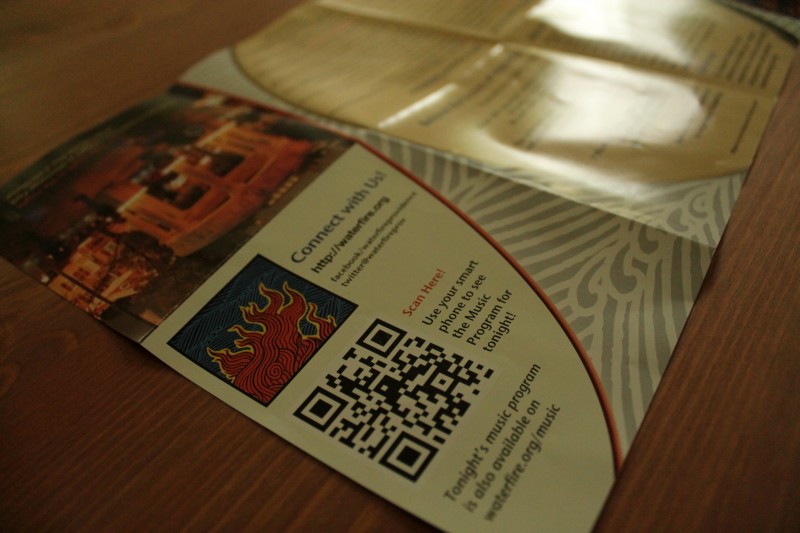Shame on you if you’re still thinking of print as “traditional” marketing! It is the same as consider web design to be just about beautiful exterior. Hop over to this website for details.
Beyond the fact that print is not dead, we’re firm believers that paper and ink can be as limitless as your imagination. Nowadays, consumers can access bedtime stories by scanning wallpaper, quit smoking by way of virtual reality and track their heart rate just from touching a magazine ad.
As brands continue to rethink their marketing, it’s important not to count print (or paper) out just yet. For many, it can aid in creating multi-sensory experiences, bringing together craftsmanship, creativity and design in a way that resonates with consumers.
Taking inspiration from the trends mentioned in St. Joseph Communications’ Print in a Digital World 2018 report, we’ve compiled a list of some of the most innovative projects we’ve been a part of to show you just how interesting paper can be.
TREND 1: Art, not ads.
“From smartphones to desktops and tablets to wearables, we cannot escape real-time digital experiences. Real disruption goes beyond swipes and taps. It comes from creating a wider sensory and immersive experience.” – St. Joseph Communications

SONY
Sony chose our Magic Window design for a direct mail campaign. The results? The average time spent with this mailer – 41 minutes. The rate of recall among recipients – 90%. The average time this piece was retained by recipients – 4 months.
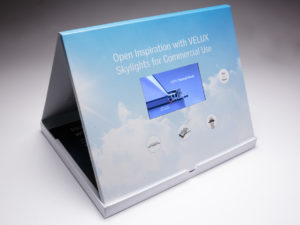
VELUX SKYLIGHTS
We worked with full service agency Wray Ward Marketing to promote the commercial use capabilities of their client VELUX Skylights. They wanted to portray that VELUX Skylights was superior to its competition. The design they chose to do this was our table tent video box. The video screen is contained within the box. When you open up the box, the piece stands and locks into place displaying the informational video front and center. The video box also included play/pause and volume controls.
TREND 2: Beyond the page.
“The emergence of new channels and technologies are creating new opportunities for marketers. Virtual reality and augmented reality are bridging the gap between print and digital like never before. Downloadable apps can be easily introduced to campaigns, while more sophisticated brands are integrating these technologies into their own mobile platforms.” – St. Joseph Communications

FOOD LION
Food Lion Grocery Stores used this press kit to deliver information about the new layout and new products offered at its stores. When you open up the press kit, a replica of the new store pops up in the middle of the kit with detailed information on the new layout laid out in the middle. Also upon opening, a sound chip was activated to deliver an auditory announcement of the new stores. Each panel featured colorful imagery and information about the exciting changes of the store, and the right-hand panel also featured additional tabs of information that could be easily pulled out. The locking mechanism on the inside allowed the panels to lock in place making this the perfect comprehensive press kit for Food Lion.
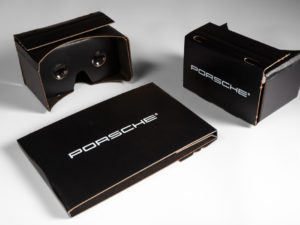
PORSCHE
We designed and produced this custom Virtual Reality Viewer for Porsche. They used it to give consumers an interactive experience with their brand.
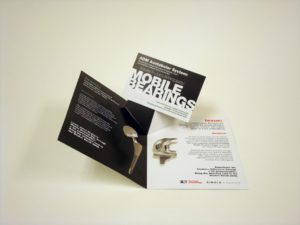
STRYKER DIAGNOSTICS
Stryker Diagnostics, the makers of hip and knee medical devices, chose this V-Pop design as a tradeshow invitation. When you open the invitation, a postcard pops up in the center. The call to action on the postcard was to bring the postcard to the Stryker booth to experience a 3D demonstration of the hip and knee devices. When users held the postcard marker in front of the web cams set up at the Stryker kiosks they were able to view a live 360 degree 3D demonstration of these devices.
TREND 3: Far from traditional.
“Thinking of print as ‘traditional’ is an old way of thinking. Consumers can cook, monitor their own health, and connect physical and digital channels thanks to a printed piece. These are the types of interactions that are meaningful to consumers.” – St. Joseph Communications
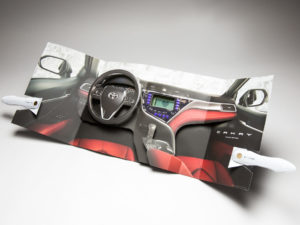
TOYOTA
The request was for something that has “never been done before.” With an LCD heart monitor and two completely independent electronic units in one magazine unit, this spectacular for the Toyota Camry certainly meets the criteria.
Incorporating movement, interaction and technology, this first-of-its-kind Camry insert is the latest re-invention of what print can be.
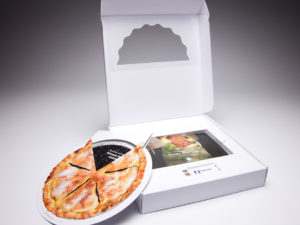
NATIONWIDE INSURANCE
Nationwide Insurance used this pie box mailer to deliver information about CareMatters, its long-term care product, to agents nationwide. The outside of the box pie box featured a partial mylar window that allowed recipients to get a sneak peek inside the box. In this case, a piece of the pie. Inside the box was a double-layered pie made out of paper that delivered different information as you turned the upper layer of the pie. There was also a brochure and a web key inside the box that drove agents to a unique landing page, specific to their agency, where they could learn more about this product. This box was also the winner of a GDUSA American Package Design Award!
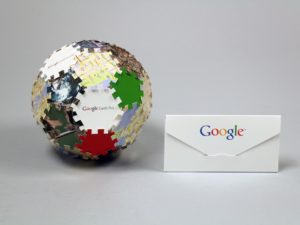
GOOGLE
When you’re the most widely used web-based search engine in the world, how do you communicate with your audience in a way that is equally as big? Google chose this puzzle piece mailer to introduce the features of Google Earth Pro, its 3D interactive globe. The pieces of the puzzle were mailed inside the envelope and recipients were asked to connect it all together. The results? A fully dimensional ball featuring the features and benefits of Google Earth Pro.
